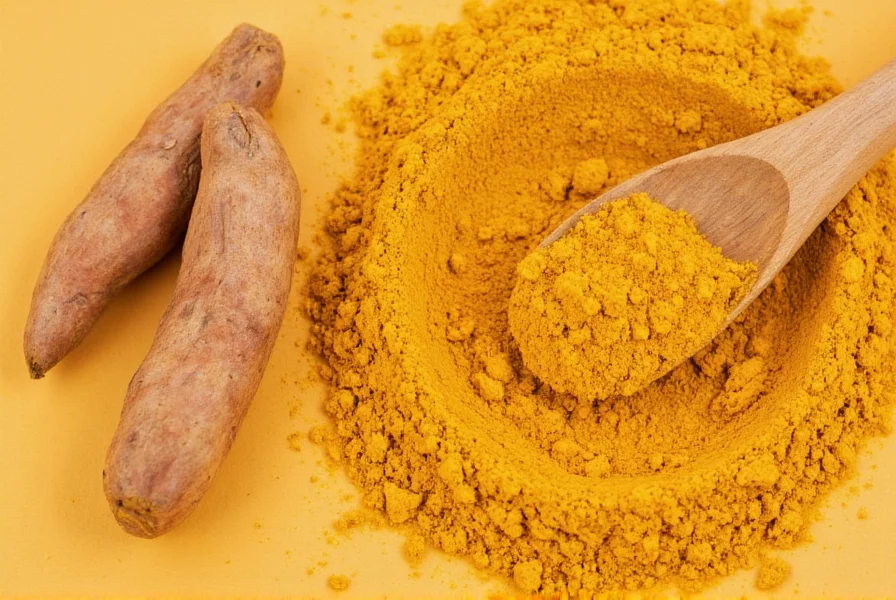When exploring what turmeric does for your body, it's essential to understand the science behind this golden spice. Turmeric (Curcuma longa) contains curcuminoids, with curcumin being the most biologically active component responsible for most health benefits. While traditional medicine has used turmeric for centuries, modern research provides evidence for its specific physiological effects.
The Science Behind Turmeric's Effects
Curcumin works through multiple molecular pathways in the body. It inhibits key inflammatory molecules like NF-kB, which plays a central role in chronic inflammation. This mechanism explains why what does turmeric do for inflammation is such a common query—its anti-inflammatory properties rival some pharmaceutical options without the same side effect profile.
As a potent antioxidant, curcumin neutralizes free radicals while also boosting the body's own antioxidant enzymes. This dual action makes it particularly effective against oxidative stress, a contributor to aging and many chronic diseases. When examining how turmeric benefits joint health, research shows reduced pain and improved function in osteoarthritis patients, with studies published in the Journal of Medicinal Food demonstrating significant improvements compared to placebo.

Evidence-Based Health Benefits
The most well-documented effects of turmeric include:
| Benefit | Scientific Evidence | Recommended Usage |
|---|---|---|
| Anti-inflammatory effects | Multiple studies show reduction in inflammatory markers like CRP | 500-1,000mg curcumin with 5-10mg piperine daily |
| Joint health support | Clinical trials demonstrate reduced pain in osteoarthritis | Standardized extract 2-3 times daily with meals |
| Cognitive function | Research links curcumin to increased BDNF and reduced amyloid plaques | Long-term supplementation shows most benefit |
| Cardiovascular support | Studies indicate improved endothelial function and reduced oxidation | Consistent daily intake for months |
Understanding Bioavailability Challenges
One critical aspect of what are the proven health benefits of turmeric involves bioavailability. Curcumin has poor absorption on its own—only about 1% enters the bloodstream. This explains why traditional preparations often combine turmeric with black pepper (containing piperine), which increases absorption by up to 2,000%. Modern supplements frequently use phospholipid complexes or nanoparticle formulations to address this limitation.
When considering how does curcumin work in the body, it's important to note that effects build over time. Most clinical studies showing significant benefits used daily supplementation for 8-12 weeks minimum. Acute effects are minimal, which is why consistent, long-term use yields the best results for chronic conditions.

Realistic Expectations and Safety
While turmeric offers numerous potential benefits, it's crucial to maintain realistic expectations. Research supports its role as a complementary approach, not a replacement for medical treatment. The turmeric effects on brain function show promise for cognitive support, but they won't reverse established neurological conditions.
Most adults can safely consume turmeric in culinary amounts (1-3 grams daily). Higher supplemental doses (up to 8 grams) have been studied with minimal side effects, though some experience mild digestive upset. People with gallbladder issues, bleeding disorders, or those taking blood thinners should consult healthcare providers before using turmeric supplements.
Practical Integration into Daily Life
To maximize the benefits of turmeric, consider these evidence-based approaches:
- Combine with black pepper (just 1/20th teaspoon) to dramatically improve absorption
- Consume with healthy fats (like olive oil or avocado) as curcumin is fat-soluble
- Heat gently when cooking—high temperatures can degrade curcumin
- Consider standardized extracts (95% curcuminoids) for therapeutic effects
- Be consistent—most benefits require regular consumption over weeks or months
When evaluating turmeric and black pepper absorption, research consistently shows this combination creates a synergistic effect that makes the health benefits significantly more accessible to your body. This simple pairing transforms turmeric from a spice with limited bioavailability to a potent wellness tool.
Conclusion
Turmeric's effects on the body stem primarily from curcumin's ability to modulate inflammation and oxidative processes at the molecular level. While not a miracle cure, substantial scientific evidence supports its role in promoting joint comfort, cognitive health, and overall wellness when used appropriately. The key to experiencing what turmeric does for your body lies in consistent, properly formulated consumption that addresses bioavailability challenges.











 浙公网安备
33010002000092号
浙公网安备
33010002000092号 浙B2-20120091-4
浙B2-20120091-4